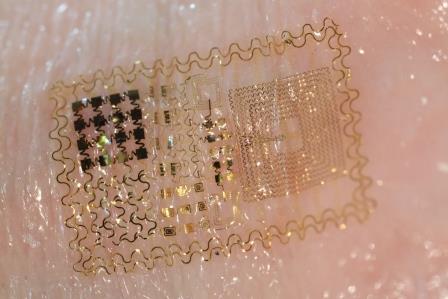A major step on the road to developing robotic exoskeletons
Monkeys have been trained to control a virtual arm on a computer screen using only their brain waves.
Scientists say the animals were also able use the arm to sense the texture of different virtual objects.
Writing in the journal Nature, the researchers say their work could speed up the development of wearable exoskeletons.
This technology could help quadriplegic patients not only regain movement but a sense of touch as well.
In the experiments, a pair of rhesus monkeys was trained to control a virtual arm on a screen solely by the electrical activity generated in their brains.
Thanks to feedback from the experimental setup, the monkeys were also able to feel texture differences of objects on the screen.
The researchers involved say that just like a normal functioning limb, the monkeys were able to do both actions at the same time, sending out signals to control the arm while simultaneously getting electrical feedback to understand the texture of the objects that were touched.
Wireless future
Prof Miguel Nicolelis from the Duke University Centre for Neuroengineering in North Carolina was the senior author of the study. He believes it is a significant step in this field.
“It provides us with the demonstration that we can establish a bi-directional link between the brain and an artificial device without any interference from the subject’s body,” he said.
The researchers trained the monkeys, Mango and Tangerine, to play a video game using a joystick to move the virtual arm and capture three identical targets. Each target was associated with a different vibration of the joystick.
“In terms of rehabilitation of patients that suffer from severe neurological disorders this is a major step forward”, Prof Miguel Nicolelis Duke University Centre for Neuroengineering
Multiple electrodes were implanted in the brains of the monkeys and connected to the computer screen. The joystick was removed and motor signals from the monkey’s brains then controlled the arm.
At the same time, signals from the virtual fingers as they touched the targets were transmitted directly back into the brain.
The monkeys had to search for a target with a specific texture to gain a reward of fruit juice. It only took four attempts for one of the monkeys to figure out how to make the system work.
According to Prof Nicolelis, the system has now been developed so the monkeys can control the arm wirelessly.
“We have an interface for 600 channels of brain signal transmission, so we can transmit 600 channels of brain activity wirelessly as if you had 600 cell phones broadcasting this activity.
“For patients this will be very important because there will be no cables whatsoever connecting the patient to any equipment.”
The scientists say that this work represents a major step on the road to developing robotic exoskeletons – wearable technology would allow patients afflicted by paralysis to regain some movement.
Bookmark this page for “aNeuroengineering” and check back regularly as these articles update on a very frequent basis. The view is set to “news”. Try clicking on “video” and “2” for more articles.









